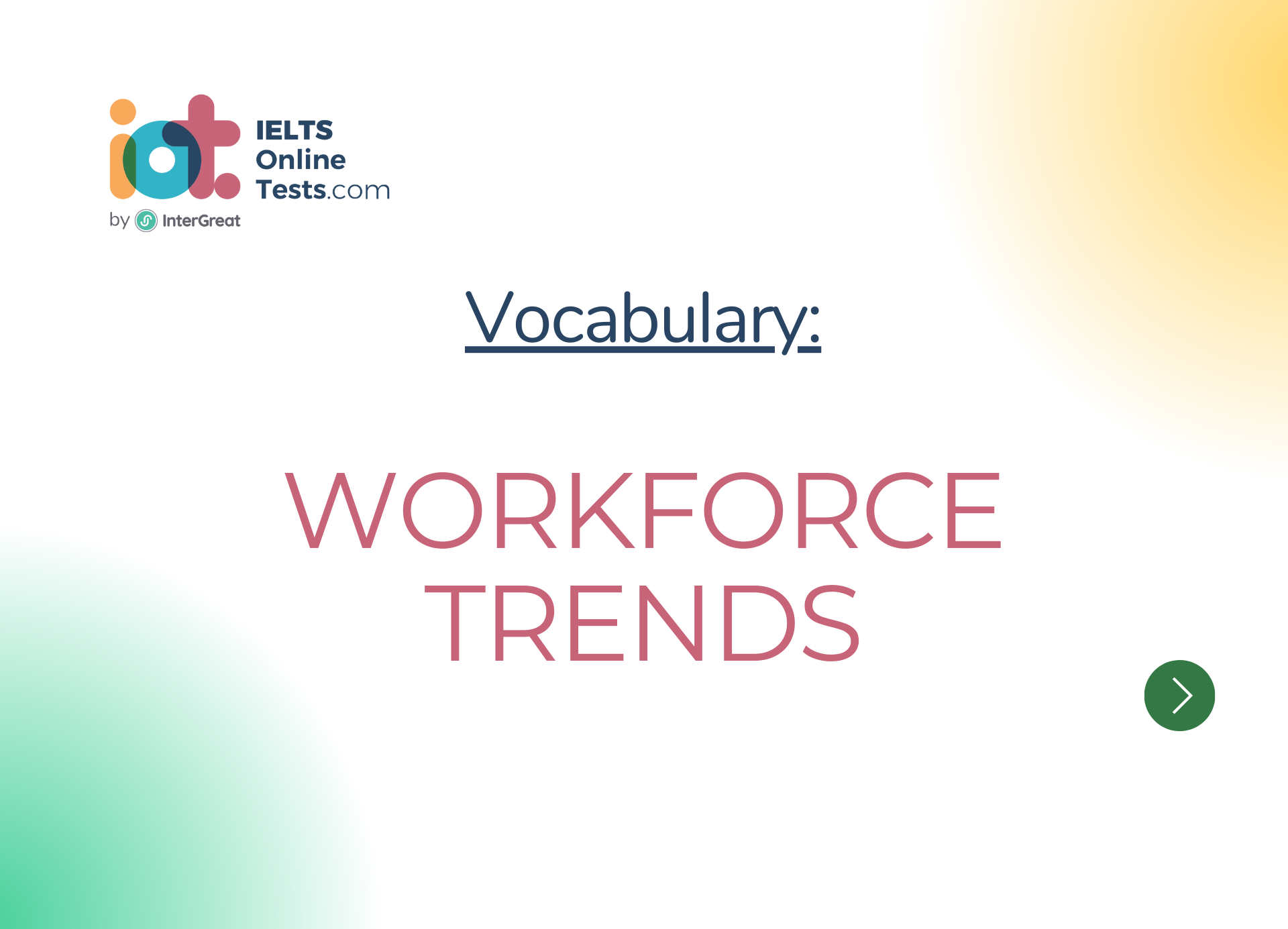
Workforce trends
Below is a detailed list of vocabulary related to workforce trends for the IELTS band score 4.5-6.0:
Workforce:
The total number of people employed or available for work in a particular company, industry, or country.
Employment Rate:
The percentage of the working-age population that is currently employed.
Labor Market:
The supply and demand for labor, where job seekers interact with employers.
Job Market:
The availability of job opportunities and the demand for different types of jobs.
Unemployment Rate:
The percentage of the labor force that is unemployed and actively seeking employment.
Labor Force Participation:
The proportion of the working-age population that is either employed or actively seeking work.
Remote Work:
Work performed from a location other than the traditional office, often enabled by technology.
Flexible Work:
Jobs with adjustable hours or work arrangements to accommodate personal needs.
Gig Economy:
A labor market characterized by short-term contracts or freelance work instead of permanent jobs.
Automation:
The use of machines and technology to perform tasks previously done by humans.
Artificial Intelligence (AI):
Computer systems capable of performing tasks that typically require human intelligence.
Upskilling:
Acquiring additional skills or training to enhance one's qualifications.
Reskilling:
Learning new skills to transition to a different job or career.
Job Security:
The confidence that a job will remain stable and not be at risk of elimination.
Remote Team Management:
Overseeing and coordinating remote teams of employees.
Telecommuting:
Working from a remote location using telecommunications technology.
Digital Skills:
Competencies related to using computers, software, and digital tools.
Virtual Collaboration:
Working together on projects despite being physically located in different places.
Diversity and Inclusion:
Promoting an inclusive work environment that values differences and diversity.
Work-Life Balance:
Balancing personal and professional responsibilities to reduce stress and improve well-being.
Job Satisfaction:
The level of contentment and fulfillment an employee feels in their role.
Job Mobility:
The ease with which employees can change jobs or move between companies.
Career Development:
The process of advancing in one's career through learning and experience.
Company Culture:
The values, beliefs, and practices that shape the work environment and employee behavior.
Remote Communication:
Methods and tools used to communicate with remote colleagues and teams.
Flexible Schedules:
Offering employees the ability to adjust their work hours to fit their needs.
Workplace Diversity:
The variety of different backgrounds and perspectives represented in the workforce.
Skill Shortage:
A lack of qualified candidates for certain job positions.
Digital Transformation:
The integration of digital technology into various aspects of business operations.
Employee Benefits:
Additional perks and advantages offered by employers to attract and retain talent.
Workplace Well-being:
Promoting the physical and mental health of employees in the workplace.
Remote Training:
Providing training and development opportunities to remote employees.
Workplace Flexibility:
The degree to which employees can choose when and where they work.
Job Redesign:
Restructuring job roles and tasks to increase efficiency and job satisfaction.
Workplace Productivity:
The level of output and efficiency achieved by employees in their work.
Talent Acquisition:
The process of attracting and hiring skilled employees.
Company Reputation:
The overall public perception of a company and its values.
Employee Engagement:
The emotional connection and commitment that employees have to their work and the organization.
Workplace Training Programs:
Initiatives designed to enhance employees' skills and knowledge.
Workplace Safety:
Ensuring a safe and healthy environment for employees to perform their duties.
Remember to use these words in various contexts and practice them to improve your English language skills. Good luck with your IELTS preparation and your understanding of workforce trends!




